Jeonju hanok house (전주 한옥숙박체험관)
14.1Km 2024-08-05
56-1 , Eunhaeng-ro, Wansan-gu, Jeonju-si, Jeonbuk-do
+82-10-8669-6700
Jeonju Hanok stands at the end of a quiet alley off Eunhaeng-ro in the center of Jeonju Hanok Village, and so is a good base for exploring the village. All guest rooms are ondol-heated and have a loft space that’s popular with children. Water purifiers are installed, and a breakfast of toast, fruit and tea or coffee is provided. The outdoor yard has a table where visitors can relax in good weather.
Sejonggwan of the Royal Room (왕의지밀 세종관)
14.1Km 2024-12-23
5218-22 , Chunhyang-ro, Wansan-gu, Jeonju-si, Jeonbuk-do
+82-63-284-1004
Wangui Jimil Sejonggwan (Royal Room of King Sejong) in Jeonju, Jeollabuk-do, is a hotel that combines hanok style with modern convenience - one of a group of hotels named after Joseon kings. There are eight guestrooms, divided into Gold and Silver class, and all equipped with bathrooms and toilets. Rooms have exposed beams and traditional furniture, and the scenic views and chirping of insects beyond the large windows add to the charm. Additional facilities include a hanok cafe, a restaurant, and a convention center. Guests can reach anywhere in Jeonju Hanok Village in about 10 minutes by car.
Artbox - Jeonju Branch [Tax Refund Shop] (아트박스 전주)
14.1Km 2024-04-16
22-5, Jeonjugaeksa 5-gil, Wansan-gu, Jeonju-si, Jeollabuk-do
-
Taejonggwan of the Royal Room (왕의지밀 태종관)
14.1Km 2024-12-23
5218-24 , Chunhyang-ro, Wansan-gu, Jeonju-si, Jeonbuk-do
+82-63-284-1004
Wangui Jimil Taejonggwan (‘Royal Room of King Taejong’) in Jeonju, Jeollabuk-do, is a hotel that combines hanok style with the modern convenience - one of a group of hotels named after Joseon kings. There are a total of six rooms with exposed beams, paintings on the walls and traditional furniture, plus bathrooms and toilets; and the scenery beyond the large windows adds to the charm. Additional facilities include a hanok cafe, a restaurant and a convention center. Guests can reach anywhere in Jeonju Hanok Village in about 10 minutes by car.
Sunjonggwan of the Royal Room (왕의지밀 순종관)
14.1Km 2024-12-23
5218-6 , Chunhyang-ro, Wansan-gu, Jeonju-si, Jeonbuk-do
+82-63-284-1004
Wangui Jimil Sunjonggwan (‘Royal Room of King Sunjong’) in Jeonju, Jeollabuk-do,’ is a hotel that combines traditional hanok style with the convenience of modern facilities - one of a group of hotels named after Joseon kings. The hotel has six rooms graded 2, 3 and 5 with Silver rooms and Gold rooms.; all rooms have fine scenic views. Additional facilities include a hanok cafe, a restaurant, and a convention center. Guests can reach anywhere in Jeonju Hanok Village in about 10 minutes by car.
Taejogwan of the Royal Room (왕의지밀 태조관)
14.1Km 2024-12-23
5218-26 , Chunhyang-ro, Wansan-gu, Jeonju-si, Jeonbuk-do
+82-63-284-1004
Located in Jeonju, Wangui Jimil Taejogwan (‘Royal Room of King Taejo’) in Jeonju, Jeollabuk-do, is a hanok hotel combining hanok style with modern facilities - one of a group of hotels named after Joseon kings. The hotel has four bedrooms. The Gold and Silver rooms are equipped with a king-size bed and a jacuzzi, have paintings and embroideries on the wall, and (in the case of Gold) exposed timbers. The scenery beyond the windows is calm and beautiful. The hotel offers a hanok cafe and a place for group gatherings. Gyeonggijeon Shrine, with its portrait of King Taejo, and Jeonju Hanok Village are nearby.
Nepa - Jeonju Gosa Branch [Tax Refund Shop] (네파 전주고사)
14.2Km 2024-04-22
74-12, Jeonjugaeksa 4-gil, Wansan-gu, Jeonju-si, Jeollabuk-do
-
Yangsajae (문화공간 양사재)
14.2Km 2024-08-05
40 , Omokdae-gil, Wansan-gu, Jeonju-si, Jeonbuk-do
+82-63-282-4959
In Joseon times Yangsajae hanok stay in Jeonju Hanok Village, Jeollabuk-do, was part of the Jeonju hyanggyo or local Confucian school - a place of study and scholarship. Later the poet Lee Byeong-ki lived and wrote here, and later still, in 1987, the house became a public elementary school. Since 2002 it has been a hanok stay dedicated to cultural tourism and promotion of local history and traditions.
Royal Portrait Museum (어진박물관)
14.2Km 2024-04-07
44, Taejo-ro, Wansan-gu, Jeonju-si, Jeonbuk-do
+82- 63-231-0090
Opened on November 6, 2010, the Royal Portrait Museum is one of the newest attractions of Jeonju, located within the Gyeonggijeon Shrine. Royal Portrait Museum is a valuable museum as a new tourism resource of Jeonju as well as Gyeonggijeon Shrine and the Portrait of King Taejo, as well as other various high-class exhibitions to preserve, manage, and enhance the glorious cultural assets of Joseon royal family. The museum is comprised of one above-ground level and one underground level with an area of 1,193.71 square meters. The Portrait of King Taejo and six other king’s portraits (Portrait of King Sejong, King Yeongjo, King Jeongjo, King Cheoljong, King Gojong, and King Sunjong) are exhibited on the first floor. The portraits are preserved in temperature- and humidity-controlled cases. In addition, the museum houses History Hall, Palanquin Hall, a planned exhibition hall, resting area, management office and storage room for relics. Palanquin Hall exhibits Hyangjeong (Palanquin for Incense Burner and Case), Sinyeon (Palanquin for Royal Portrait and Palanquin for Mortuary Tablet), Chaeyeo (Palanquin for High Officials), Gagyo (Palanquin for Ritual Items) featuring Korea’s sole preserved palanquin. History Hall houses approximately 80 relices related to Gyeonggijeon Shrine and Jogyeong Shrine, ancestral ritual ceremony, building, and others relics. Since the museum's opening, it makes continual efforts to become a central place for Jeonju residents to fulfill their cultural feelings. The museum operates various program like exploring famous historic sites in Gyeonggijeon Shrine, hands-on programs such as a guard experience to protect the shrine, and duplicating Gyeonggijeon Shrine’s relics using traditional portrait-making techniques.
Gyodonggaon (교동가온)
14.2Km 2024-08-05
73-1 , Eunhaeng-ro, Wansan-gu, Jeonju-si, Jeonbuk-do
+82-63-231-2355, +82-10-5106-3355
Gyodong Gaon is a two-story hanok stay on the main street of Jeonju Hanok Village, Jeollabuk-do. The yard contains a small garden, a jangdokdae (jar stand), a furnace and a mural that has become a popular place for photos. The upper floor guestroom Numaru (‘Loft’) offers a panorama of the village. The first floor Meomulda (‘Lodging’) guestroom has a door between bedroom and living room. Nanuda (‘Sharing’) on the 2nd floor is the largest room, while Damda (‘Contain’) and Ggumggu (‘Dreaming’) both have attics. Finally, Geurida (’Drawing’) is a room with a fine view. Traditional games such as Hoops and Tuho can be played without charge.
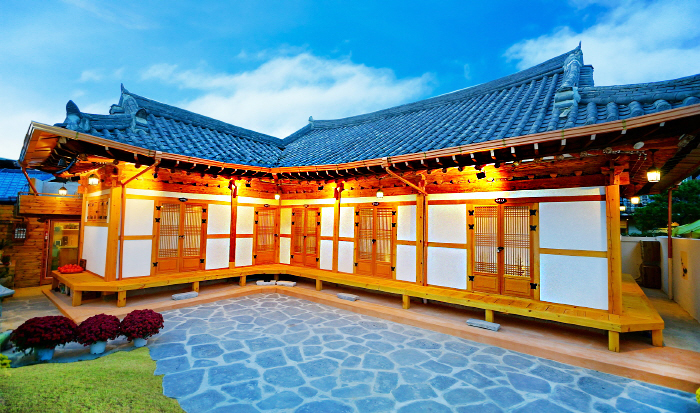
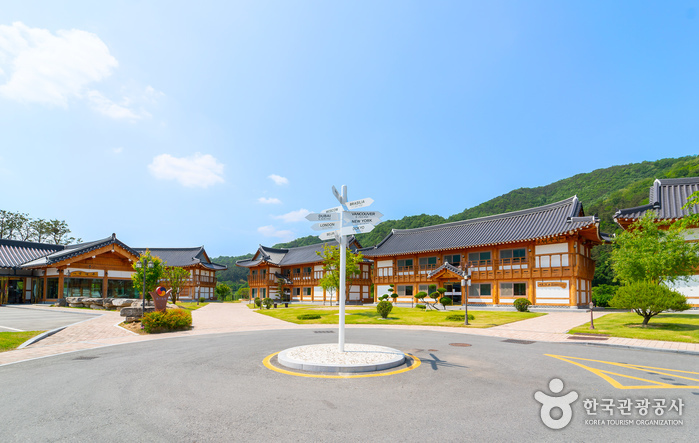



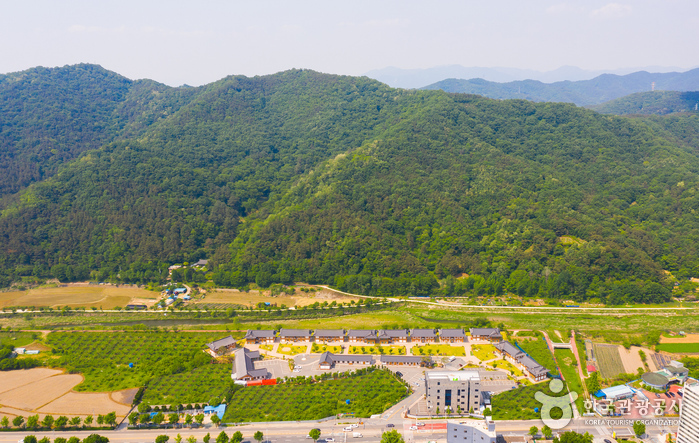
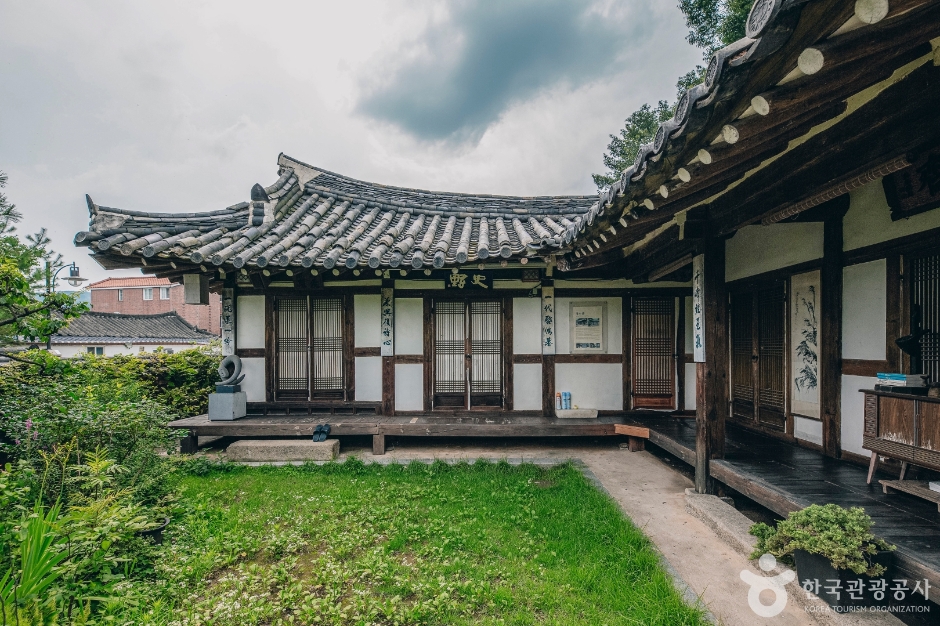
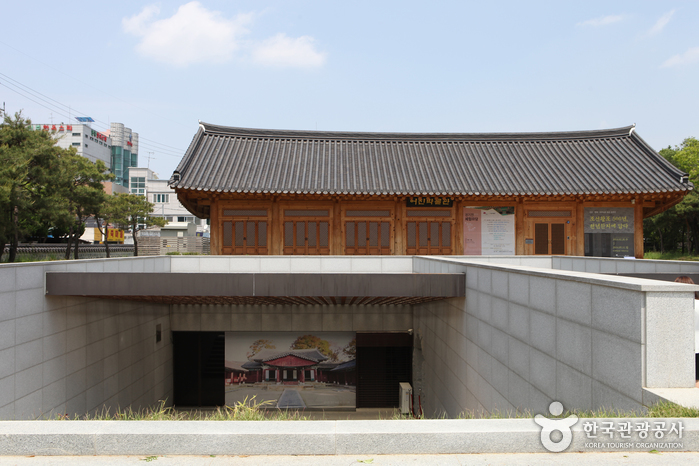
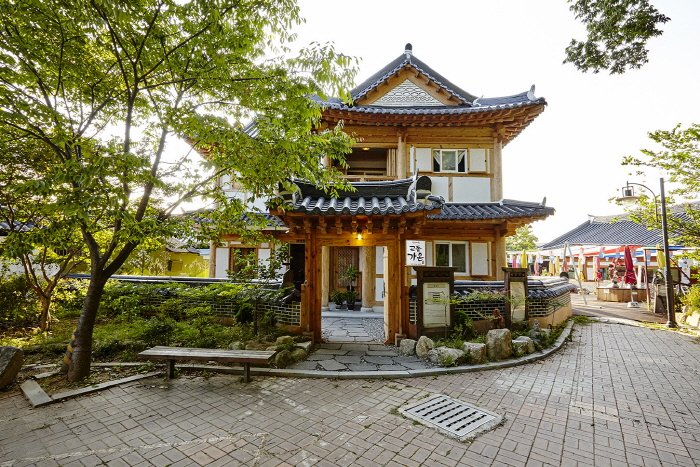
 English
English
 한국어
한국어 日本語
日本語 中文(简体)
中文(简体) Deutsch
Deutsch Français
Français Español
Español Русский
Русский